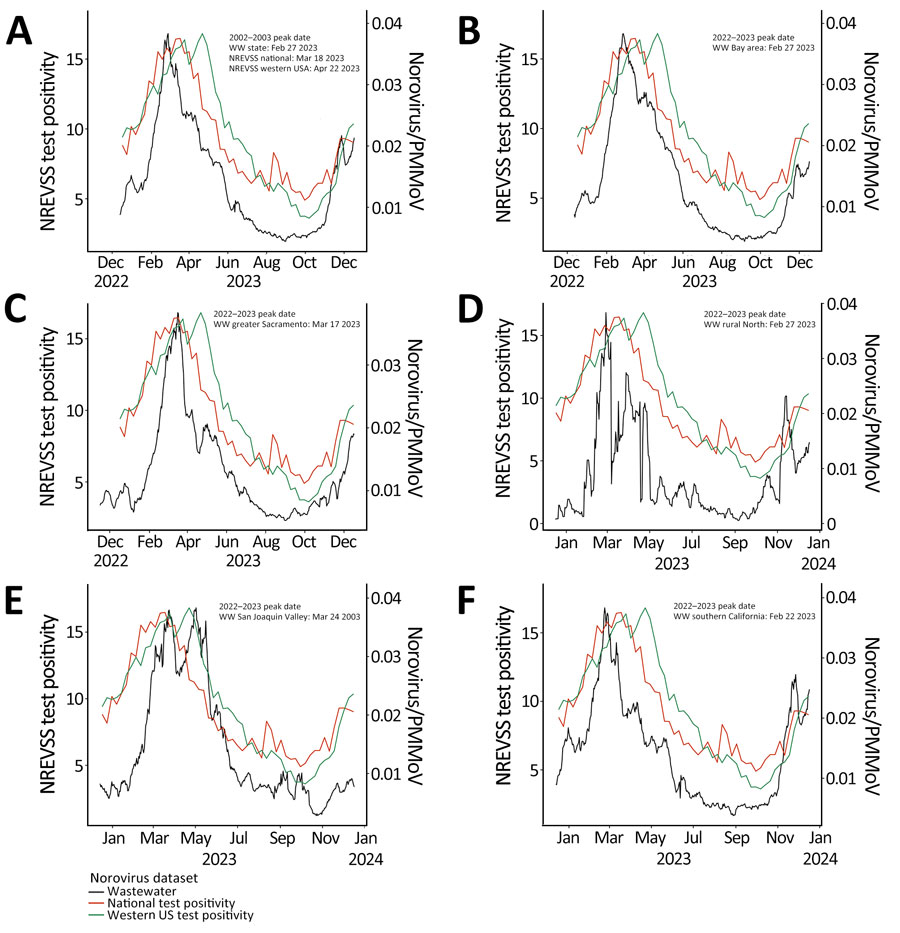Volume 30, Number 11—November 2024
Research Letter
Wastewater Surveillance for Norovirus, California, USA
Figure

Figure. NREVSS norovirus test positivity (21-day center-aligned moving average) nationally (orange lines) and for the western United States (green lines) and wastewater aggregates (10-day center-aligned moving average) for norovirus, normalized by PMMoV (black lines), California, USA, December 17, 2022–December 17, 2023. A) Statewide; B) Bay Area; C) greater Sacramento; D) rural northern California; E) San Joaquin Valley; F) southern California. NREVSS, Centers for Disease Control and Prevention National Respiratory and Enteric Virus Surveillance System; PMMoV, pepper mild mottle virus; WW, wastewater.
1These authors contributed equally to this article.
Page created: September 30, 2024
Page updated: October 23, 2024
Page reviewed: October 23, 2024
The conclusions, findings, and opinions expressed by authors contributing to this journal do not necessarily reflect the official position of the U.S. Department of Health and Human Services, the Public Health Service, the Centers for Disease Control and Prevention, or the authors' affiliated institutions. Use of trade names is for identification only and does not imply endorsement by any of the groups named above.